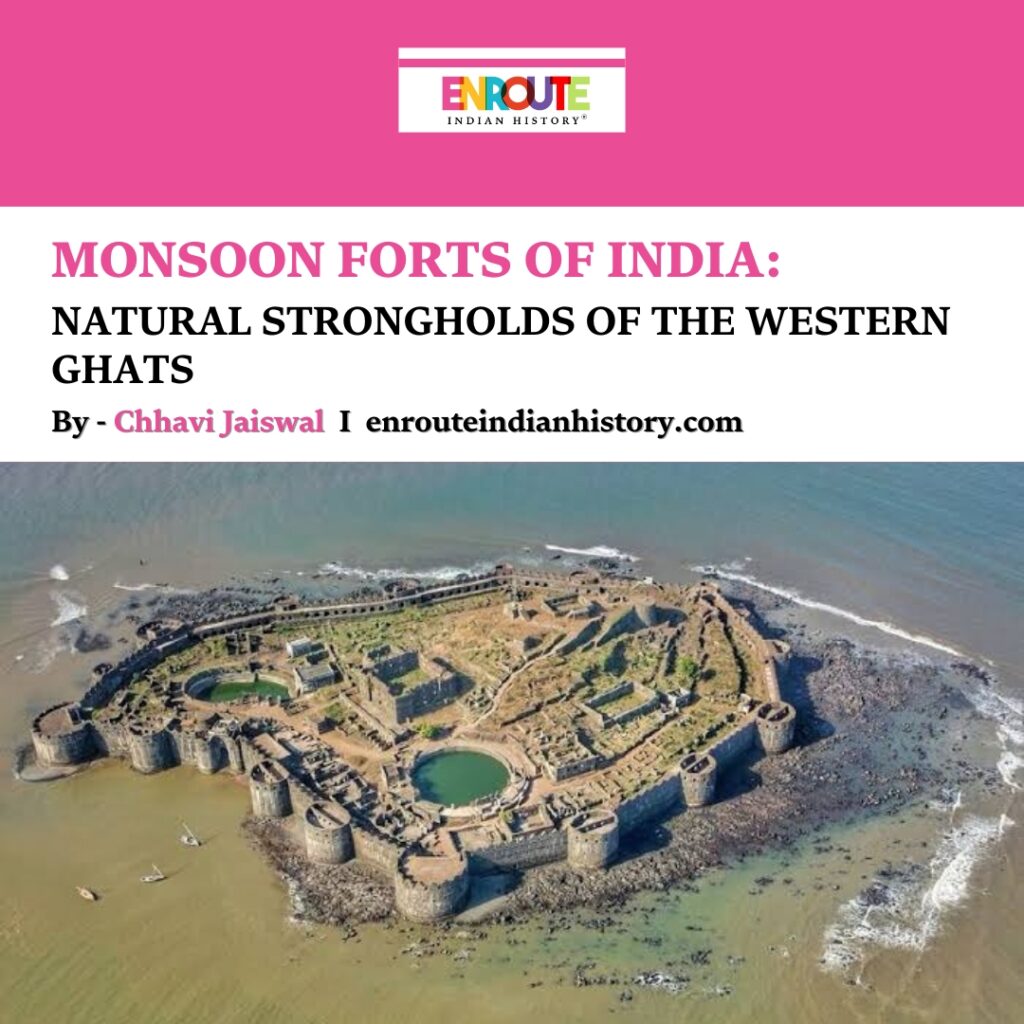

Forts had always been an important part of the body politic of the pre-modern world. They acted as sentinels to any foreign attacks or invasions. Forts have been described in ancient Indian texts as being critical to the state’s defence system. In the Arthashastra of Kautilya, the author states that the state’s defence is based on the fort (durga) and army (danda). He mentions four types of fortresses— surrounded by water, mountains, deserts, or forests. A post-Mauryan text Nitisastra by Kamandaki also mentions fortifications as one of the seven elements of the state. The Maratha empire had excelled in the craft of building forts as defensive structures. In about 350 forts that expanded throughout southern and western India, they managed to combine natural factors like monsoon and high altitude provided by hills of the western ghats with military architecture. The climatic conditions provided by the western ghats and the Konkona region— dense forest cover and heavy rainfall during monsoons—made the hill forts of the Maratha empire almost impenetrable. The Marathas had also built massive marine forts that aided them in maintaining a large naval fleet.
One of the most significant forts of the Maratha empire was the Raigad fort. Initially constructed by Chandrarao More, a feudal lord, it was taken over by Shivaji in 1656 CE who renamed it Raigad or royal fort. Eventually, it became Shivaji’s capital in 1674. The Raigad Fort sits atop a hill that could be reached only by climbing a stairway with more than 1700 steps. This Maratha military marvel was chosen as the capital because it was detached from other mountains of the Sahyadari range by a deep valley and was inaccessible from three sides. It was shielded from attacks from foreign powers due to its strategic location and the Maratha expertise in military architecture. The monsoon rains turned the surrounding valleys into natural moats. During monsoon, the fort’s high walls and natural barriers became even more formidable, as the heavy rains and mist made it difficult for invaders to launch coordinated attacks.
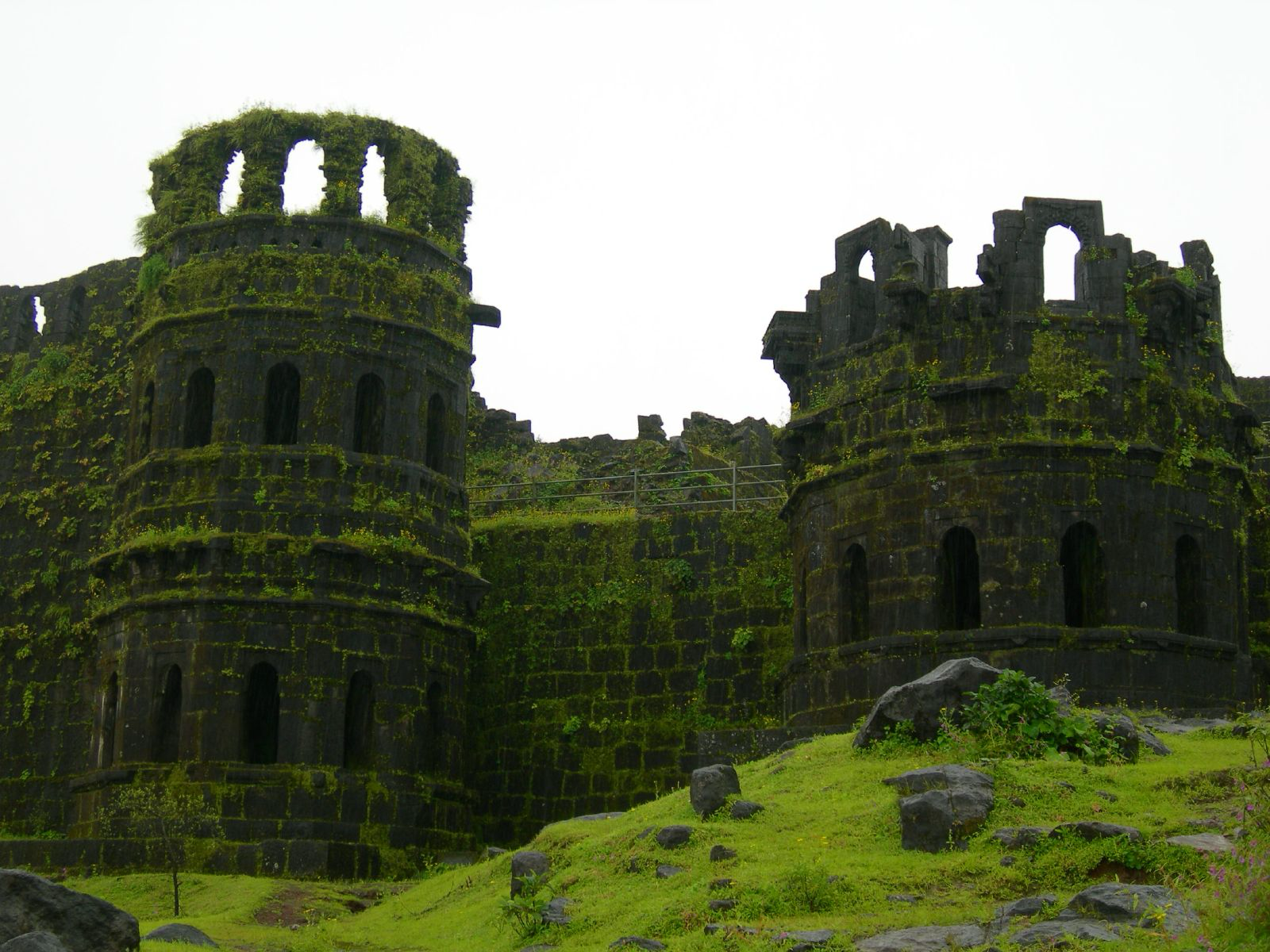

(Raigad Fort; Source: Wikimedia Commons)
The top plateau of the Raigad was covered with buildings and reservoirs. One such was the Gangasagar lake. It was an artificial lake that was constructed to supply water to the royal family. It is often said that it was built during Shivaji’s coronation with the water from the Ganges. It was also used to store and collect the rainwater. Currently, it serves as a tourist spot and the water from the lake is used to supply water to the nearby villages.
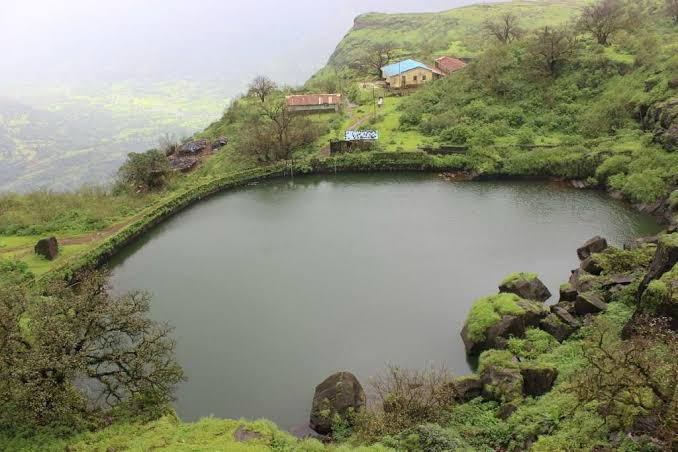

(Gangasagar Lake is a man-made lake situated inside the Raigad Fort; Source: Tripadvisor)
Another jewel in the Maratha empire’s fortifications was the Kondhana fort which was later renamed Sinhagarh. Resting on an isolated cliff of the Bhuleshwar range of the Sahyadri mountains, it stands 20 km southwest of Pune. It is more popularly associated with Tanhaji Malusare and the battle of Sinhagad that took place on 4th February 1670. The fort is surrounded by a great wall of black rock, more than 40 feet high, crowned by ring fortifications. It primarily served as a military outpost, an entry gate to the Deccan plateau. The fort’s location on a cliff made it an excellent vantage point for monitoring enemy movements. During the monsoon, the steep slopes and narrow paths became more treacherous, making it difficult for enemies to launch an effective assault. On the other hand, the fort had adequate tanks to transport and store rainwater that was sufficient for the inhabitants and the soldiers guarding the fort.
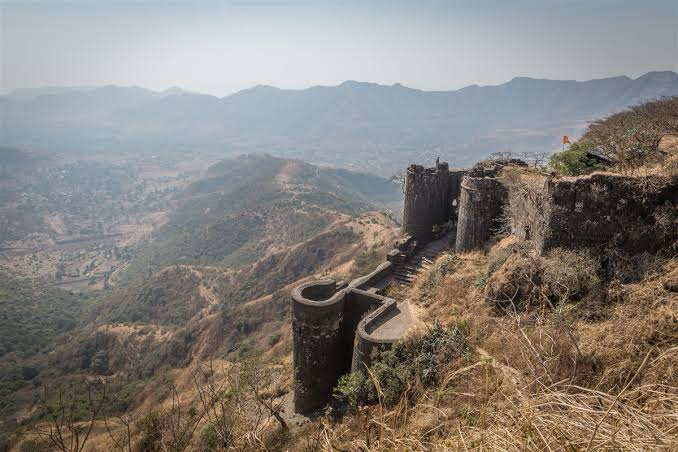

(Sinhagad or the Kondhana Fort; Source: Kevin Standage–WordPress.com)
Situated close to the Lonavala hill station, Lohagad was also a prominent structure in Maratha military architecture. It was captured by Shivaji in 1648. It is connected to the nearby Visapur fort by a small range. The fort also divides the basins of the Indrani and Pavana rivers. The fort’s location near the Arabian Sea made it a key point for overseeing the movement of goods and ensuring the security of the region. Later in the 18th century, the Peshwa Nana Fadnis built several structures in the fort which included a step-well or baoli and a water tank. The fort’s defences were complimented by natural factors, which included a moss-covered uphill climb and the camouflage provided by mist and clouds that engulfed the fort structure during monsoons.
Before being shifted to Raigad, Rajgad had served as the capital of the Maratha empire. Situated on the Murum hill of the Sahyadari mountains in the western ghats, it possesses all the salient features that are typical of the Maratha empire’s fortifications. It comprises three terraces and a citadel. All four parts had an ample supply of water through tanks, cisterns and wells. The abundant rainfall in the western ghats region again played an essential role in aiding the defence of the fort.
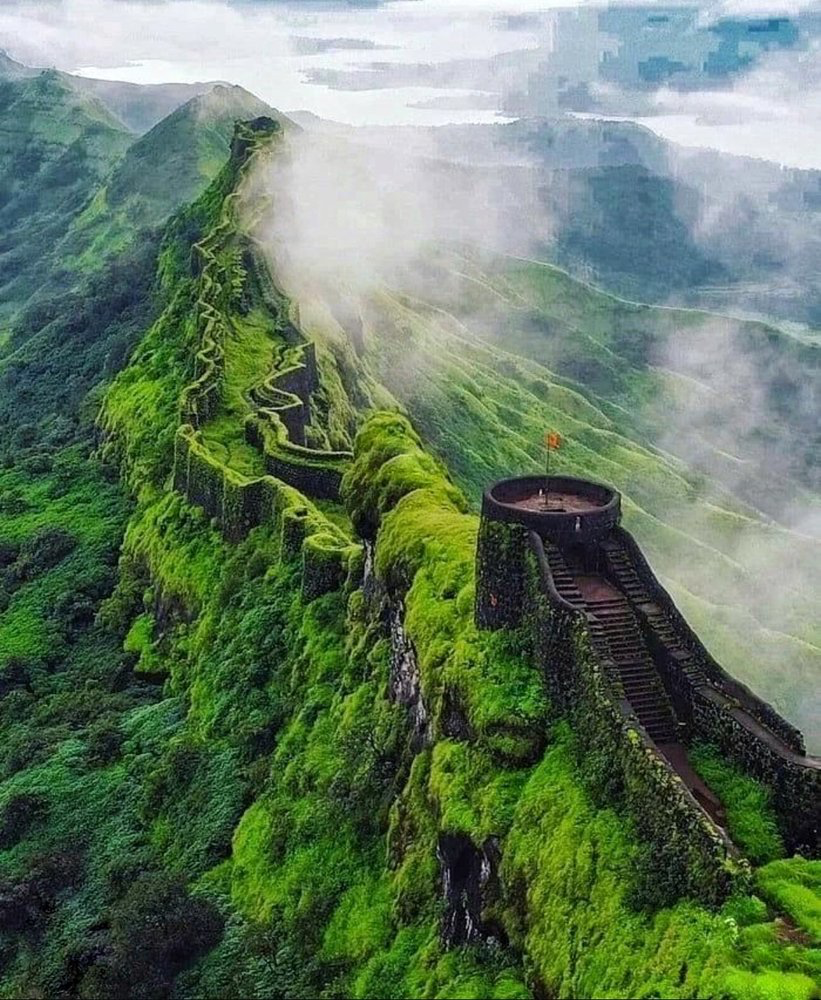

(Rajgad Fort; Source: Treks and Trails)
In addition to the hillforts, the Marathas’ military architecture also comprised numerous sea forts that acted as a gateway to India. One of the most notable of them was the Janjira fort. It was built by Abyssinians, south of Bombay. The fort is situated on an island approximately 2 kilometres into the Arabian Sea, making it accessible only by boat. The surrounding waters acted as a formidable barrier against enemy invasions. The turbulent sea waves, unpredictable tides, and rocky seabed made it nearly impossible for enemy ships to approach the fort without being detected or damaged. On the other hand, it comprised of freshwater lakes and an advanced rainwater harvesting system to store freshwater for consumption. Another naval fort was the Padmadurga, built under Shivaji. It was constructed to protect the Maratha flank from the Sidhis, Portuguese, and British and played a crucial role in maintaining the empire’s naval fleet. Twin forts like Khanderi and Underi are located in Alibaug, Maharashtra, where Khanderi, also known as Kanhoji Angre Island, was constructed by Shivaji Maharaj in 1679 and became a significant naval base under Kanhoji Angre, the legendary Maratha admiral. Underi, also known as Jaidurg, was built by the Siddis but was later contested by the Marathas was pivotal in protecting the Maratha navy and in controlling maritime trade routes. Numerous other naval forts were built by the Marathas that lined up the Konkona coast and protected the waters of the Arabian Sea from invaders while regulating and participating in maritime trade.
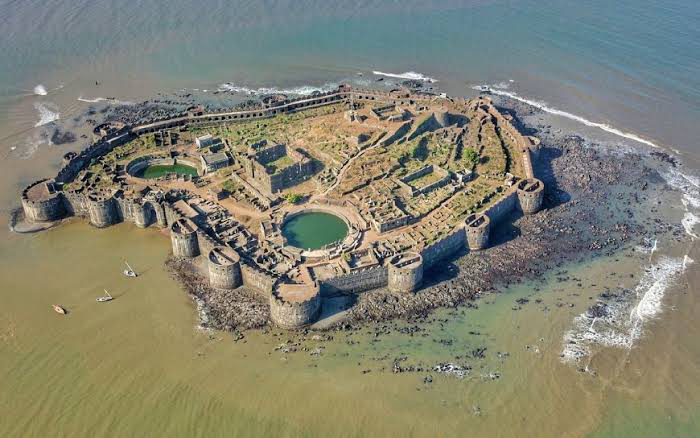

As a result, the Marathas’ monsoon and sea forts served as the empire’s first line of defence and provided them with a great military advantage. The Marathas were skilled in the knowledge of taking advantage of the humid and tropical climate of the western ghats for their defence. The swollen rivers, muddy paths, and reduced visibility made large-scale invasions nearly impossible. The defenders of these forts would use guerrilla tactics, harassing enemy troops with surprise attacks and then retreating to the safety of the forts. The Marathas, in particular, were known for their swift and unpredictable movements, using the forts as bases to strike at enemy forces and then disappearing into the dense forests and hills.
Today, while the military role has faded, the forts remain a testament to the rich history of Maharashtra and the Marathas’ military architecture. These forts serve as heritage structures that are visited by tourists from all over. Nowadays, they are a haven for trekkers and nature lovers. The combination of history, adventure, and natural beauty makes these forts a unique experience, especially during the monsoon season. The rains add an element of unpredictability to the treks, with slippery paths, gushing streams, and foggy conditions, making the journey both challenging and exhilarating. Trekkers are often greeted with the sight of wildflowers blooming along the trails, adding a burst of colour to the green landscape of the western ghats. For those who seek solitude, the forts offer a serene environment where one can reflect on the past and enjoy the beauty of nature.
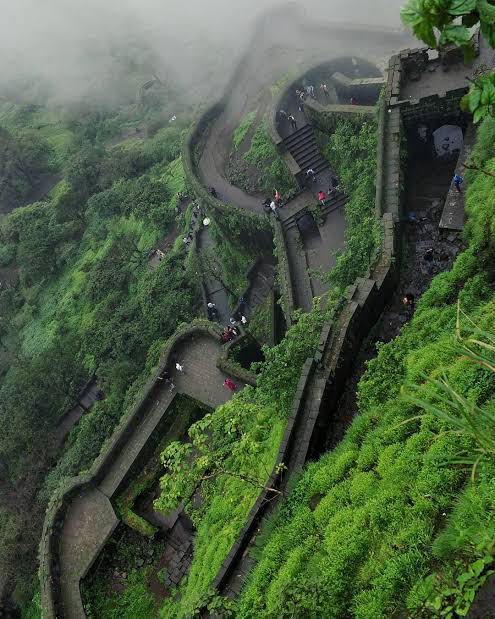

(Thousands of tourists flock to the western ghats every year to enjoy the monsoon treks; In picture: Lohagad Fort; Source: Agoda)
References:
- Fass, Virginia. The Forts of India. Rupa Co, 1986.
- Muley, Gunakar. Forts of Maharashtra. Centre for Cultural Resources and Training, 2015.
- The Legendary Raigad Fort. Indian Culture, https://indianculture.gov.in/forts-of-india/discovering-the-forts-of-india/legendary-raigad-fort
- Ghosh, Ranjeet. Enjoy Monsoon Trekking In The Hills Of Maharashtra. Outlook Traveller, 2024. https://www.outlooktraveller.com/amp/story/experiences/adventure/7-monsoon-treks-in-maharashtra
- Verma, Amrit. Forts of India. Publications Division, Ministry of Information and Broadcasting, Government of India, 1985.
- Joshi, Sachin Vidyadhar, et al. “A STUDY OF DEFENCE ARCHITECTURE AND GEO-POLITICAL SIGNIFICANCE OF COASTAL AND HINTER-LAND FORTS ON THE KONKAN COAST, MAHARASHTRA.” Bulletin of the Deccan College Research Institute, vol. 76, 2016, pp. 201–06. JSTOR, http://www.jstor.org/stable/26264783. Accessed 18 Aug. 2024.


















